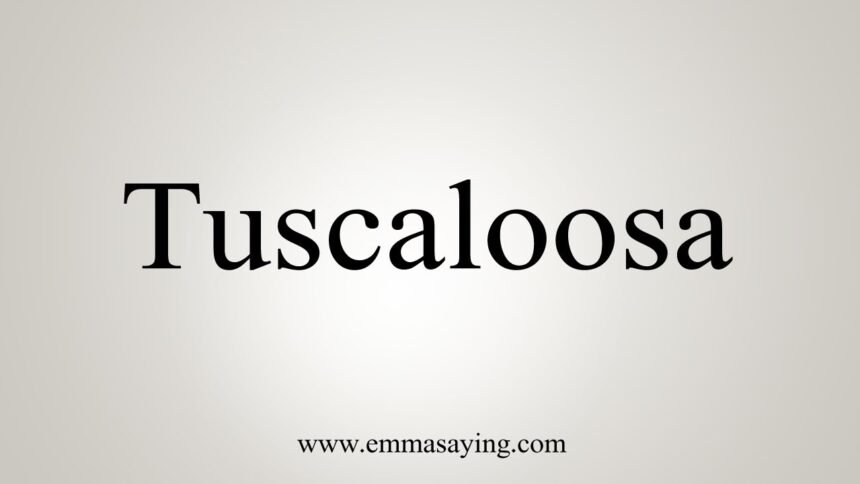Nestled in the heart of Alabama, Tuscaloosa is more than just a city; it’s a tapestry woven with rich history, vibrant culture, and a sense of community that binds its residents together like threads in a quilt. From its humble beginnings to its present-day charm, the Tuscaloosa thread runs deep, connecting past, present, and future generations in a unique and intricate pattern.
A Stitch in Time: The History of Tuscaloosa
Like many cities in the South, Tuscaloosa’s story begins with the land itself, shaped by the forces of nature and the hands of its earliest inhabitants. Native American tribes, including the Cherokee and Choctaw, once roamed these lands, leaving behind traces of their presence in the form of artifacts and mounds that dot the landscape.
The arrival of European settlers in the 19th century marked a new chapter in Tuscaloosa’s history. The city’s namesake, “Tuscaloosa,” is derived from the Choctaw words “tushka” meaning “warrior” and “lusa” meaning “black,” honoring the legendary Chief Tuskaloosa who once ruled these lands.
Tuscaloosa’s strategic location along the Black Warrior River made it a hub for trade and commerce, attracting settlers and merchants seeking new opportunities in the burgeoning frontier. The city soon became the capital of Alabama in 1826, a title it held until 1846 when the capital was moved to Montgomery.
Weaving the Fabric of Community: Tuscaloosa Today
Fast forward to the present day, and Tuscaloosa has evolved into a vibrant and thriving city, blending its rich history with modern amenities and a forward-thinking mindset. The University of Alabama, with its crimson tide spirit, serves as a cornerstone of the community, bringing together students, faculty, and alumni from all walks of life.
But beyond the campus walls, Tuscaloosa offers a tapestry of experiences for residents and visitors alike. From the lively atmosphere of downtown, where local shops and restaurants line the streets, to the serene beauty of the Tuscaloosa Riverwalk, there’s something for everyone to enjoy.
Sports fans flock to Bryant-Denny Stadium to cheer on the Crimson Tide football team, while outdoor enthusiasts explore the scenic trails of Lake Lurleen State Park. And let’s not forget about the mouthwatering barbecue joints and soul food eateries that serve up authentic Southern cuisine with a side of hospitality.
The Thread That Binds: Community and Resilience
But perhaps what truly sets Tuscaloosa apart is its sense of community and resilience in the face of adversity. The city has weathered its fair share of storms, both literal and metaphorical, from devastating tornadoes to economic challenges. Yet, through it all, the people of Tuscaloosa have remained steadfast in their resolve to rebuild, reimagine, and renew.
In the aftermath of the April 27, 2011 tornado, which tore a path of destruction through the heart of the city, Tuscaloosa rallied together in a display of strength and solidarity. Neighbors helped neighbors, volunteers rolled up their sleeves, and strangers became friends as the community came together to rebuild what was lost.
Today, the scars of the tornado serve as a reminder of the city’s resilience and the unbreakable bonds that tie its residents together. The Tuscaloosa thread, though tested by adversity, remains unbroken, weaving a narrative of hope, perseverance, and renewal.
Looking Ahead: The Future of Tuscaloosa
As Tuscaloosa continues to grow and evolve, the city stands at a crossroads, poised to embrace the opportunities and challenges that lie ahead. Urban development projects promise to revitalize downtown and create new economic opportunities, while initiatives focused on sustainability and innovation pave the way for a brighter, more resilient future.
But amidst the changes and transformations, one thing remains constant: the spirit of the Tuscaloosa community. Like threads in a tapestry, each individual contributes to the fabric of the city, weaving their unique stories and experiences into the larger narrative of Tuscaloosa.
As we look to the future, let us remember the lessons of the past and hold fast to the ties that bind us together. For in the end, it is not just the buildings or landmarks that define Tuscaloosa, but the people and their collective spirit that make it truly special.
Conclusion
The Tuscaloosa thread is more than just a metaphor; it’s a living, breathing symbol of resilience, community, and hope. As long as it continues to bind the city together, Tuscaloosa will remain a shining example of what it means to overcome adversity and embrace the future with open arms.







